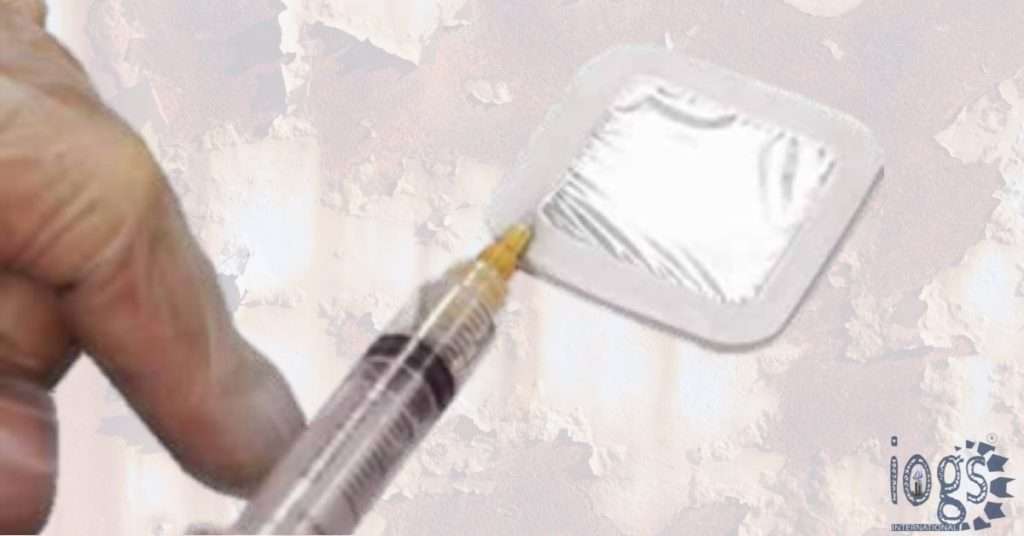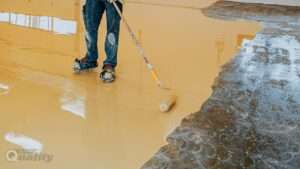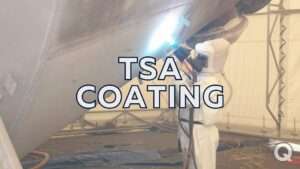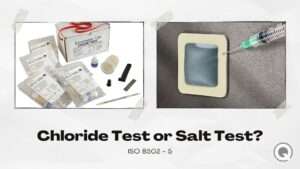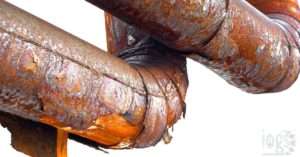The industry faces a common problem of corrosion on steel. According to research, soluble salts within the steel surface increase corrosion, reducing the lifespan of the protective coating. For ideal coating, coating inspectors perform a test that consists of a concentration of soluble salt(s) on metal surfaces before application.
Coating specification mentions that the soluble salt limit needs to be of a certain level. It also mentions the inspection and test method the coating inspector has to follow to perform the test.
There’re many apparatuses and tests available that will help in measuring the salt level of the surface that requires coating.
In this article, you’ll learn how to conduct the soluble salt test by using the conductivity meter and the bresle test patch.
What Is Inside The Salt Test Kit?
To perform the test, you need the bresle test kit that’s made following ISO 8502-6/9 for the salt test measurement. You will find the following items in the kit:
· Bresle test patch
· Calibration solution
· Cleaning solution
· Distilled or deionized water
· A syringe with the needle
· A plastic beaker.
· Conductivity meter
How to Perform the Soluble Salt Test
Make sure to wear protective equipment, such as clean and disposable gloves, to avoid contaminating the instruments and the testing surface.
Next, switch your conductivity meter by pressing its on-off button. Then, soak the electrode for a couple of minutes by using the cleaning agent from the kit.
While cleaning the surface of the electrode, use distilled water to thoroughly rinse your electrode. Dry it off by shaking off the instrument.
Next, check the accuracy of your instrument by using the calibration solution on your instrument electrode. The value on your instrument screen should be corresponding with the provided value of the solution.
Follow the manufacturer’s instructions to calibrate the conductivity meter if you don’t see the provided value of the calibration solution.
The Sampling Process
It is time for the next step where you need to remove the bresle test patch’s protective backing, including the foam center.
Using the adhesive side of your patch, gently place and then press it against your test surface. Make sure that minimum to no air gets trapped in the patch compartment.
Next, use distilled water to decontaminate the beaker and the syringe. Fill up the beaker with enough amount of deionized water for testing.
Note down the blank value of the deionized water within the beaker prior to using it for the test.
To get the blank value, first switch on the conductivity meter, and read out its screen to zero. Then fill your conductivity meter electrode using the deionized water within the beaker. Finally, write down the water’s conductivity that appears on the screen as your blank value.
Next, use your syringe to take out 2.5 ml of deionized water from your beaker and insert the needle to your bresle patch by using the spongy foam perimeter in the angle of almost 30˚.
Release the syringe’s water inside your patch. Allow the salt to dissolve by tapping on the latex membrane for a minute by using your finger, then wait for 2 minutes.
After two minutes, without taking out the needle from your patch, use the syringe to suck the water, and then re-inject it into your patch. Do this at least four times.
After completing that, use the syringe and try extracting as much solution as possible. Finally, remove the needle from the patch.
The Water’s Conductivity Measurement
The solution that’s extracted gets injected inside the conductivity meter electrode to evaluate the test solution’s conductivity as your measured value.
Then, subtract the blank value from the value measured and you’ll get the salt level of your steel surface in µS/cm.
Salt Test Equation
The manufacturer of your conductivity meters will supply the equations, when needed, to convert the salt level from µS/cm to mg/m2. To get the equation, you need to refer to the datasheet or the instrument manual.
Specification Compliance
An inspector should record their findings within the daily report. They should check with the project coating specification to make sure that the test result is in the suitable range.
What to Do If the Salt Test Result Is Not Within the Specification
In this case, it is necessary to wash the entire surface with water (refer to specification for water’s PPM range). Next, perform the test again once that’s done to ensure specification compliance.
Applicable Standards for Salt Test by Bresle Method
To better understand on how the industry-standard specifies to perform the water-soluble salt test , please take a look at the ISO 8502-6/9. You can also refer to the instrument manufacturer instructions and guidelines to perform the salt test if the specification does not specify the slat test standard.

